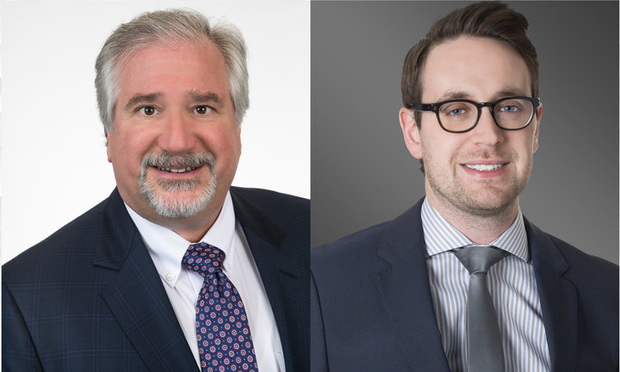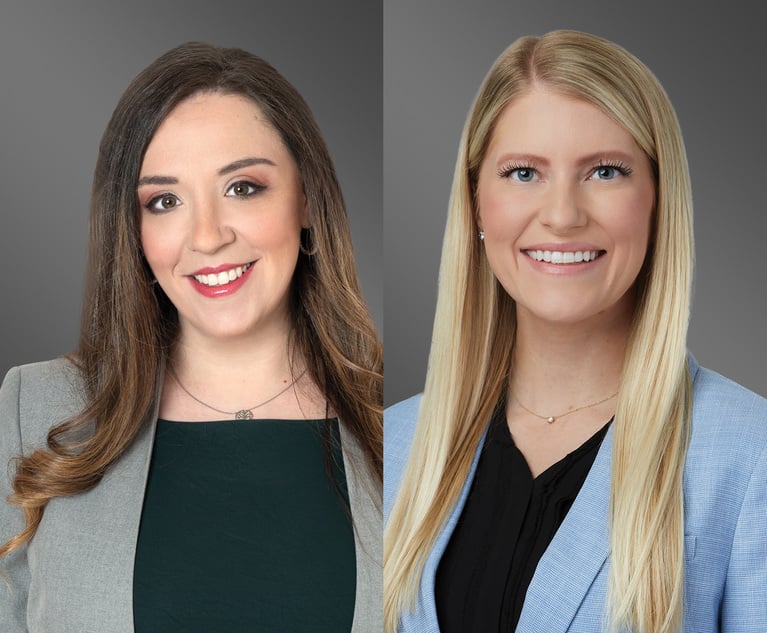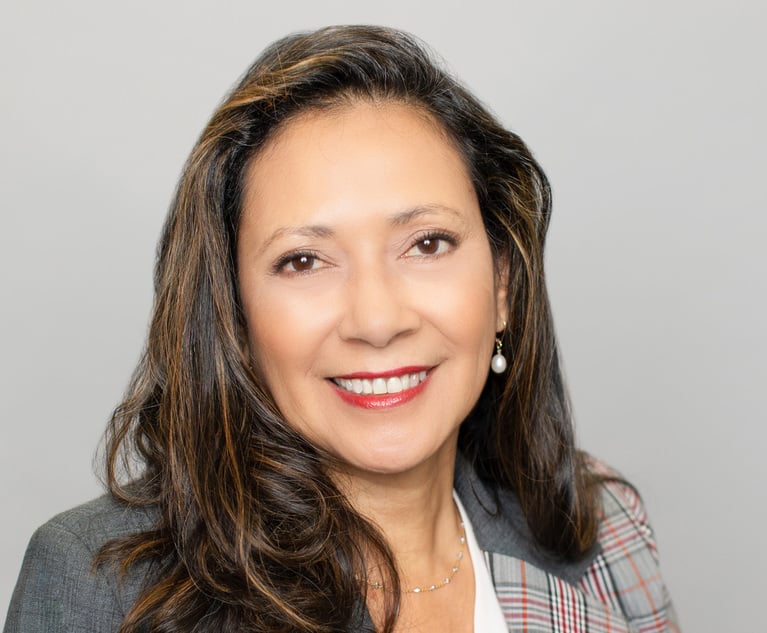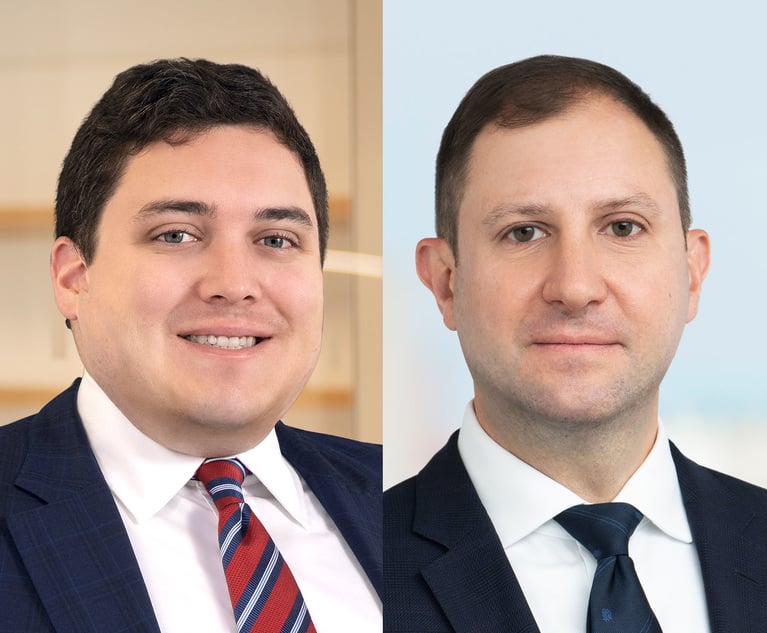Is Software Still Patentable?
The last four years have posed significant hurdles to software patents; nevertheless they continue to be filed and allowed.
August 20, 2018 at 10:00 AM
6 minute read
 James J. DeCarlo, shareholder (left) and George David Zalepa, associate, Greenberg Traurig. (Courtesy photo)
James J. DeCarlo, shareholder (left) and George David Zalepa, associate, Greenberg Traurig. (Courtesy photo)
Over the past four years, decisions by the Supreme Court and Federal Circuit, as interpreted by the U.S. Patent and Trademark Office, have had a dramatic effect on software-related inventions. These decisions have focused primarily on what comprises patentable subject matter under 35 U.S.C. § 101 and whether a patent's specification adequately supports the claims. While uncertainty still exists, recent court decisions, coupled with sound prosecution strategies, can be used to bolster a practitioner's arguments before the USPTO and courts.
In Alice v. CLS Bank (2014), the Supreme Court applied the now familiar “two-part test” first laid out in Mayo v. Prometheus (2012). Under this test, a claim is first analyzed to determine if it is “directed to” an abstract idea. If so, the claim is then analyzed to determine whether it recites “significantly more” than the identified abstract idea or just “routine and conventional” elements. This test was (and is) routinely applied to software claims, and the pendulum of patentability for software inventions post-Alice swung firmly towards ineligibility. Nearly all decisions by the Federal Circuit in the immediate aftermath of Alice found claims ineligible. Similarly, the USPTO's allowance rate in software-related art units plummeted, and many allowed but not yet issued applications were withdrawn by the USPTO.
While many cases are representative of this period, the decision in Electric Power Group v. Alstom (Fed. Cir. 2015) epitomizes the immediate post-Alice bias toward ineligibility. There, the Federal Circuit found a claim directed toward power grid monitoring ineligible as the claim broadly described high-level computing operations including “collecting,” “analyzing,” and “presenting” data. While the claims in that case arguably failed to provide a detailed recitation of these steps, this precedent has been used extensively to find software inventions ineligible under § 101 regardless of the level of detail recited.
Fortunately for applicants, the patentability pendulum has begun to rebound. Important decisions such as McRO v. Bandai (Fed. Cir. 2016), BASCOM v. AT&T (Fed. Cir. 2016) and Enfish v. Microsoft (Fed. Cir. 2016) have provided applicants with new ammunition. Most recent statistics indicate that 2016 was the high-water mark for Alice rejections, with the tide turning back in applicants' favor since.
Enfish, in particular, has provided the clearest guidance. In that case, the court deemed claims directed toward an improved data structure patent-eligible as they improved the functionality of a computing device. The Federal Circuit most recently reaffirmed this problem-solution standard in Berkheimer v. H.P. (Fed. Cir. 2018) which involved claims directed toward digitally processing and archiving files. There the court found all claims directed toward an abstract idea (under reasoning similar to Electric Power), but under the second step of Alice found certain claims patent-eligible as the specification explicitly stated that claims “improve[d] system operating efficiency and reduce[d] storage costs.” In contrast, the claims deemed ineligible merely recited “routine” components with no clear indication of any improvement in the functioning of a computing device.
The Berkheimer case also held that whether an element is routine and conventional is a question of fact. This holding spawned a memo to USPTO examiners advising that any allegation that claim elements are “routine and conventional” now require a factual showing beyond just being known in the art. While this new examination requirement has not yet yielded many decisions, it is being closely watched and should be used as appropriate in rebutting an examiner's allegations in “step 2” of the Alice analysis.
In parallel with § 101, changes in the interpretation of 35 U.S.C. § 112 have also impacted software-related inventions. Specifically, in Williamson v. Citrix (Fed. Cir. 2015), the Federal Circuit applied § 112(f) to a patent claiming a “distributed learning control module.” In construing this term, the court “require[d] that the specification disclose an algorithm for performing the claimed function” performed by the “distributed learning control module.” In finding the term invalid, the court stated that the specification described the functions of the module but failed to disclose “an algorithm for performing the claimed functions.” Thus, the holding in Williamson effectively raised the bar for how detailed a specification must be if § 112(f) is invoked.
So while software patents are still viable, their scope has been reined in by Alice and Williamson. While addressing two distinct statutes, these cases emphasize that a software patent can no longer be drafted at a high-level of functionality. A patent's specification should clearly articulate both a technical problem addressed by the invention as well as a clear nexus between what is claimed and the technical problem being solved. Given the USPTO's and courts' focus on technological improvements, it is vital to go beyond a mere business solution. Applicants should now also presume they will be subject to heightened scrutiny under §§ 101 and 112 and draft a robust specification including as much implementation detail as possible, including detailed flowcharts or even pseudo-code when applicable. The courts and examiners want see a clear description in the specification and claims of how things are done, not merely what is being done.
In responding to examiner's rejections, it is also important for applicants to draw analogies to the slowly growing body of case law finding claims patent eligible. Under the rubric of Enfish, the most potent argument for patentability is the ability to identify a clear technical improvement that is recited in the claims and, importantly, is explicitly identified in the specification.
For issued patents, or applications filed pre-Alice, such a problem and solution might be difficult to identify or may be missing entirely. In these instances, applicants and patentees may be able to salvage patentability by emphasizing that the specific ordered combination of elements represents significantly more than an allegedly abstract idea, as per the decision in Bascom, or by arguing a lack of factual evidence that the claims elements are “routine and conventional” under Berkheimer.
The past four years have posed significant hurdles to software patents; nevertheless, they continue to be filed and allowed. Moving forward, applicants (and inventors) should pay significant attention to the level of detail not just in the claims but also within the written description of the invention. This will pave the clearest path towards not only obtaining patent protection in the software arts but also upholding the validity of such patents in the courts.
Jim DeCarlo is a shareholder in Greenberg Traurig's Intellectual Property and Technology Practice. A registered patent attorney and electrical engineer, he is actively involved in virtually all aspects of intellectual property counseling. George David Zalepa focuses his practice on intellectual property and technology matters.
This content has been archived. It is available through our partners, LexisNexis® and Bloomberg Law.
To view this content, please continue to their sites.
Not a Lexis Subscriber?
Subscribe Now
Not a Bloomberg Law Subscriber?
Subscribe Now
NOT FOR REPRINT
© 2025 ALM Global, LLC, All Rights Reserved. Request academic re-use from www.copyright.com. All other uses, submit a request to [email protected]. For more information visit Asset & Logo Licensing.
You Might Like
View All
What Will It Mean in California if New Federal Anti-SLAPP Legislation Passes?
9 minute read
For Growing Law Firms, Customizable Financing Can Unlock Opportunities
6 minute read
The Rise of Female Breadwinners: Challenging Traditional Divorce Dynamics
4 minute read
An Overview of Proposed Changes to the Federal Rules of Procedure Relating to the Expansion of Remote Trial Testimony
15 minute readTrending Stories
- 1Data Disposition—Conquering the Seemingly Unscalable Mountain
- 2Who Are the Judges Assigned to Challenges to Trump’s Birthright Citizenship Order?
- 3Litigators of the Week: A Directed Verdict Win for Cisco in a West Texas Patent Case
- 4Litigator of the Week Runners-Up and Shout-Outs
- 5Womble Bond Becomes First Firm in UK to Roll Out AI Tool Firmwide
Who Got The Work
J. Brugh Lower of Gibbons has entered an appearance for industrial equipment supplier Devco Corporation in a pending trademark infringement lawsuit. The suit, accusing the defendant of selling knock-off Graco products, was filed Dec. 18 in New Jersey District Court by Rivkin Radler on behalf of Graco Inc. and Graco Minnesota. The case, assigned to U.S. District Judge Zahid N. Quraishi, is 3:24-cv-11294, Graco Inc. et al v. Devco Corporation.
Who Got The Work
Rebecca Maller-Stein and Kent A. Yalowitz of Arnold & Porter Kaye Scholer have entered their appearances for Hanaco Venture Capital and its executives, Lior Prosor and David Frankel, in a pending securities lawsuit. The action, filed on Dec. 24 in New York Southern District Court by Zell, Aron & Co. on behalf of Goldeneye Advisors, accuses the defendants of negligently and fraudulently managing the plaintiff's $1 million investment. The case, assigned to U.S. District Judge Vernon S. Broderick, is 1:24-cv-09918, Goldeneye Advisors, LLC v. Hanaco Venture Capital, Ltd. et al.
Who Got The Work
Attorneys from A&O Shearman has stepped in as defense counsel for Toronto-Dominion Bank and other defendants in a pending securities class action. The suit, filed Dec. 11 in New York Southern District Court by Bleichmar Fonti & Auld, accuses the defendants of concealing the bank's 'pervasive' deficiencies in regards to its compliance with the Bank Secrecy Act and the quality of its anti-money laundering controls. The case, assigned to U.S. District Judge Arun Subramanian, is 1:24-cv-09445, Gonzalez v. The Toronto-Dominion Bank et al.
Who Got The Work
Crown Castle International, a Pennsylvania company providing shared communications infrastructure, has turned to Luke D. Wolf of Gordon Rees Scully Mansukhani to fend off a pending breach-of-contract lawsuit. The court action, filed Nov. 25 in Michigan Eastern District Court by Hooper Hathaway PC on behalf of The Town Residences LLC, accuses Crown Castle of failing to transfer approximately $30,000 in utility payments from T-Mobile in breach of a roof-top lease and assignment agreement. The case, assigned to U.S. District Judge Susan K. Declercq, is 2:24-cv-13131, The Town Residences LLC v. T-Mobile US, Inc. et al.
Who Got The Work
Wilfred P. Coronato and Daniel M. Schwartz of McCarter & English have stepped in as defense counsel to Electrolux Home Products Inc. in a pending product liability lawsuit. The court action, filed Nov. 26 in New York Eastern District Court by Poulos Lopiccolo PC and Nagel Rice LLP on behalf of David Stern, alleges that the defendant's refrigerators’ drawers and shelving repeatedly break and fall apart within months after purchase. The case, assigned to U.S. District Judge Joan M. Azrack, is 2:24-cv-08204, Stern v. Electrolux Home Products, Inc.
Featured Firms
Law Offices of Gary Martin Hays & Associates, P.C.
(470) 294-1674
Law Offices of Mark E. Salomone
(857) 444-6468
Smith & Hassler
(713) 739-1250






